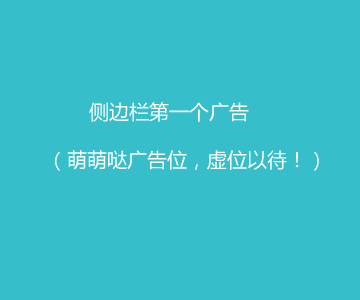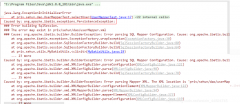机器学习迁移模型到IOS
https://paulswith.github.io/2018/02/24/迁移学习InceptionV3/ 上文记录了如何从一个别人训练好的模型, 切入我们自己的图片, 改为我们自己的模型. 项目源码和转换源码已经上传到git. 说说转换为mlmodel的工具有两个: 接着往下看: 如果你跟我一样, 训练的模型, 从tensorflow的代码保存下来的, 调用的: 它并不会保存出一个pb文件, 其中的.meta也需要其他方式转换似乎也可以, 我没有尝试过. 操作参考链接https://www.jianshu.com/p/091415b114e2 导入图和查看图的节点信息: 其实这一步个人不是很清楚很知道它做了什么,但确是不得不做的. 最后的大小看着也不像是”减包” input_tensor_shapes: 是placeholder 和 input节点, 方括号的第一个参数是batch大小,代表一张一张的喂给它. 字典里面这两个, 对应生成后的InceptionV3_input的两个属性. output_tensor_names: 训练后得到的节点, 对应生成后的InceptionV3_output的两个属性 上方具体的参数可以在方法看得到,后面四个参数就是我们输入图片时候的均值化, 还有个特殊的参数 执行完成后生成文件: 首先, 直接将inceptionV3.mlmodel拖入到工程: 他们之间的关系是, inception_v3_input导入 -> 启动inception_v3.model训练 -> 得到inception_v3_output 分别提供了一个实例化方法. 首先确认他们之间的调用方向 层次, 我直接是参考tensorflow加载的顺序, 只要理解了, 就可以直接调用了: 如果参照tensorflow加载模型的做法, 我们直接是一张图片, 得到一个run到pool3, 但实际CoreML只给我们生成了一个实例方法: 方法必须要传入一个 预测部分的, 完整核心代码 均有详细的注释说明 通过整合代码层次, 代码调用也封装好了, 方便代用: 制作gif, 直接看图片: 或者上面链接从我的git上下载源码: [
本来以为移植到手机很简单, 但是不简单的是我的模型本身就是迁移学习别人的模型,有很多莫名其面的坑, 在CoreML经历了N个坑后,1点14分我搞掂了.
https://github.com/Paulswith/machineLearningIntro/tree/master/classification_101转化为mlmodel

https://github.com/tf-coreml 有安装方法.
转换Example: https://github.com/tf-coreml/tf-coreml/tree/master/examples 是否是graph-pb?
1
saver.save(sess, MODEL_SAVEPATH, global_step=
50)
用这个方法, 你需要在上方代码的下面加两行,就可以继续:
1
2
if i %SAVE_EPOCH ==
0:
tf.train.write_graph(sess.graph, MODEL_SAVE_DIR,
'model.pbtxt')
pdtxt固化为pd
我是直接使用的bezel, 编译tensorflow源码后, 直接使用, 其中参数跟着填, 需要注意的是output_node:
导入化图
如果你的图不属于pb文件, 那么就会在导入图的时候报错的.
1
2
3
4
5
6
7
8
9
10
11
12
13
14
15
16
with open(TF_MODEL_FILE,
'rb')
as f:
serialized = f.read()
tf.reset_default_graph()
original_gdef = tf.GraphDef()
original_gdef.ParseFromString(serialized)
with tf.Graph().as_default()
as g:
tf.import_graph_def(original_gdef, name=
'')
ops = g.get_operations()
try:
for i
in range(
10000):
print(
'op id {} : op name: {}, op type: "{}"'.format(str(i),ops[i].name, ops[i].type))
except:
print(
"全部节点已打印完毕.")
pass
预处理节点
需要注意两点:
最后生成一个完整的pb文件.
1
2
3
4
5
6
7
8
9
10
11
12
input_node_names = [
'import/Mul',
'BottleneckInputPlaceholder']
# 本来以为是import/DecodeJpeg/contents, 实际上是Mul(tfcoreml-git上说的)
output_node_names = [
'import/pool_3/_reshape',
'final_train_ops/softMax_last']
# 想要保存的节点 , 'final_train_ops/softMax_last'
gdef = strip_unused_lib.strip_unused(
input_graph_def = original_gdef,
input_node_names = input_node_names,
output_node_names = output_node_names,
placeholder_type_enum = dtypes.float32.as_datatype_enum)
with gfile.GFile(FROZEN_MODEL_FILE,
"wb")
as f:
f.write(gdef.SerializeToString())
开始转换
1
2
3
4
5
6
7
8
9
10
11
12
13
14
15
16
17
input_tensor_shapes = {
"import/Mul:0":[
1,
299,
299,
3],
# batch size is 1
"BottleneckInputPlaceholder:0":[
1,
2048],
}
output_tensor_names = [
'import/pool_3/_reshape:0',
'final_train_ops/softMax_last:0']
# Call the converter. This may take a while
coreml_model = tfcoreml.convert(
tf_model_path=FROZEN_MODEL_FILE,
mlmodel_path=COREML_MODEL_FILE,
input_name_shape_dict=input_tensor_shapes,
output_feature_names=output_tensor_names,
image_input_names = [
'import/Mul:0'],
red_bias =
-1,
green_bias =
-1,
blue_bias =
-1,
image_scale =
2.0/
255.0)
class_labels, output后的模型可以直接索引到标签, 但是在实践过程中, 我这个本身是迁移别人的学习的模型并起不到作用.
ios-code调用
了解模型:
导入头文件, inceptionV3.h, 点开查看:
开始代码
这是Py 大专栏 机器学习迁移模型到IOSthon的调用方法:
1
2
poo3_frist = sess.run(poo3, feed_dict={inpiut_x: image})
# 按照模型的顺序要, 先喂给它图片, 然后图片提取到瓶颈的tensor
result = sess.run(predict, feed_dict={change_input:poo3_frist})
# 瓶颈的tensor再转入input传入, 得到我们最后的predict
1
- (
instancetype)initWithBottleneckInputPlaceholder__0:(MLMultiArray *)BottleneckInputPlaceholder__0 import__Mul__0:(CVPixelBufferRef)import__Mul__0;
MLMultiArray, 而且shape必须一致的. 最后我直接调用MLMultiArray的方法,生成一个0值的2048shape
1
2
3
4
5
6
7
8
9
10
11
12
13
14
15
16
17
18
19
20
21
22
23
24
25
26
27
28
29
- (inception_v3 *)tfModel {
if (!_tfModel) {
// 1 加载模型, 本身代码会调用init的时候, 方法会调用initWithContentsOfURL, 找到inception文件进行初始化
_tfModel = [[inception_v3 alloc] init];
}
return _tfModel;
}
- (
NSString *)predictWithFoodImage:(
UIImage *)foodImage
{
// step1: 标准为size, 转为可传入的参数.
UIImage *img = [foodImage scaleToSize:
CGSizeMake(
299,
299)];
// 转换为可传参的图片大小
CVPixelBufferRef refImage = [[
UIImage new] pixelBufferFromCGImage:img];
// 转换为可传参的类型
// step2.1: 由于一开始是没有BottleneckInputPlaceholder, 直接0值初始一个传入
MLMultiArray *holder = [[MLMultiArray alloc] initWithShape:@[@
2048] dataType:MLMultiArrayDataTypeDouble error:
nil];
// step2.2: 启动预测, 预测完成后得到import__pool_3___reshape__0
inception_v3Output *output = [
self.tfModel predictionFromBottleneckInputPlaceholder__0:holder import__Mul__0:refImage error:
nil];
// step3: 从第二步, 完整得到了想要的BottleneckInputPlaceholder, 直接代入, 图片也代入.
inception_v3Output *output1 = [
self.tfModel predictionFromBottleneckInputPlaceholder__0:output.import__pool_3___reshape__0 import__Mul__0:refImage error:
nil];
// step4: 从final_train_ops__softMax_last__0提取预测结果
MLMultiArray *__final = output1.final_train_ops__softMax_last__0;
return [
self poAccu:__final];
}
调用摄像头进行图片获取
从简书上拿到别人写好的调用摄像头拍照https://www.jianshu.com/p/62d69d89fa43, 提取了下代码:
主要逻辑:
拍照后重置大小展示到view, 异步进行模型预测, 回到主线程展示label结果.
1
2
3
4
5
6
7
8
9
10
11
12
13
14
15
16
17
18
19
20
21
22
23
24
25
26
27
28
29
30
31
32
33
34
35
36
37
38
39
40
41
42
43
44
//触发事件:拍照
- (
void)addCamera
{
UIImagePickerController *picker = [[
UIImagePickerController alloc] init];
picker.delegate =
self;
picker.allowsEditing =
YES;
//可编辑
//判断是否可以打开照相机
if ([
UIImagePickerController isSourceTypeAvailable:
UIImagePickerControllerSourceTypeCamera]) {
//摄像头
picker.sourceType =
UIImagePickerControllerSourceTypeCamera;
}
else {
//否则打开照片库
picker.sourceType =
UIImagePickerControllerSourceTypePhotoLibrary;
}
[
self presentViewController:picker animated:
YES completion:
nil];
}
//拍摄完成后要执行的代理方法
- (
void)imagePickerController:(
UIImagePickerController *)picker didFinishPickingMediaWithInfo:(
NSDictionary *)info
{
NSString *mediaType = [info objectForKey:
UIImagePickerControllerMediaType];
if ([mediaType isEqualToString:
@"public.image"]) {
//得到照片
UIImage *image = [info objectForKey:
UIImagePickerControllerOriginalImage];
image = [image scaleToSize:
self.imageView.frame.size];
self.imageView.image = image;
// 异步处理, 不要占用主线程:
dispatch_async(dispatch_queue_create(
0,
0), ^{
NSString *preString = [
self.prediction predictWithFoodImage:image];
dispatch_async(dispatch_get_main_queue(), ^{
self.preLabel.text = preString;
});
});
}
[
self dismissViewControllerAnimated:
YES completion:
nil];
}
//进入拍摄页面点击取消按钮
- (
void)imagePickerControllerDidCancel:(
UIImagePickerController *)picker
{
[
self dismissViewControllerAnimated:
YES completion:
nil];
}
测试结果




好困, 该睡觉了...]
温馨提示: 本文由Jm博客推荐,转载请保留链接: https://www.jmwww.net/yidong/11572.html



